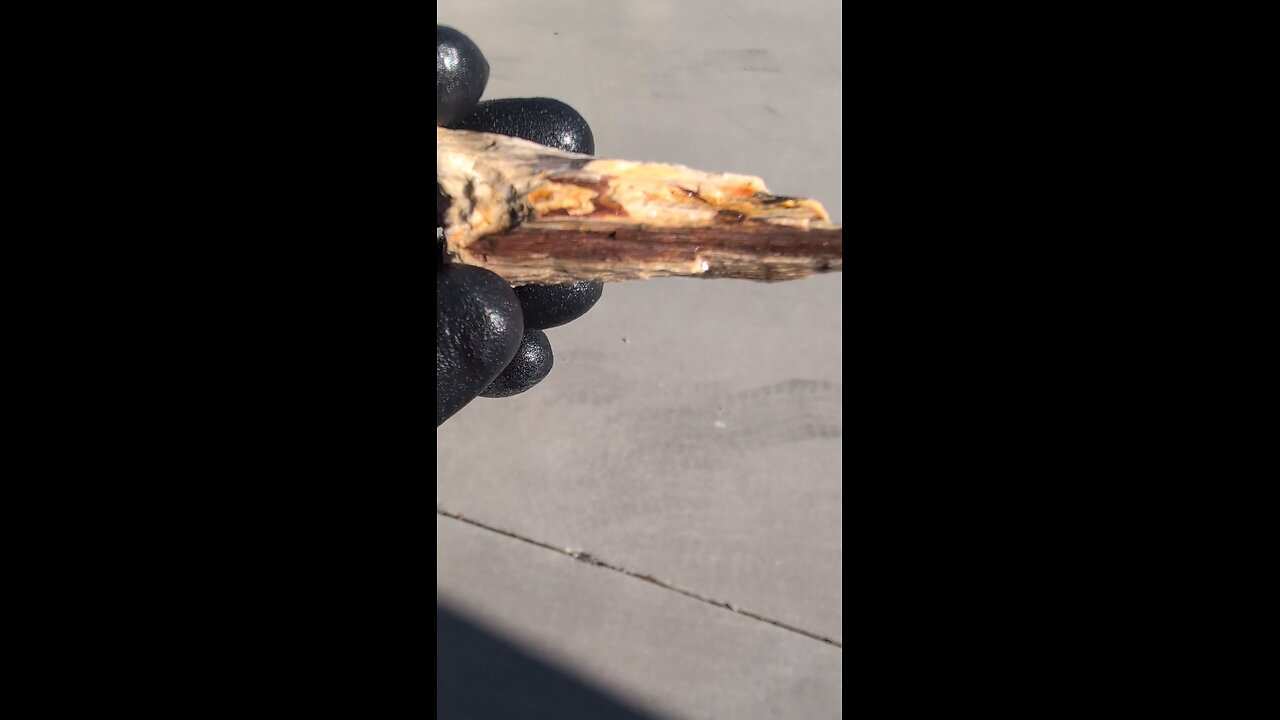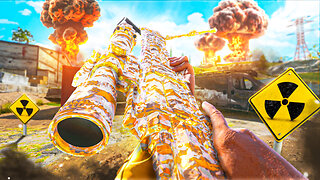Premium Only Content

Petrified wood!
Petrified wood is a type of fossil where the organic materials of a tree or tree-like plant have been replaced by minerals, preserving the original structure of the wood in stone form. Here are some key details about petrified wood:
Formation: The process of petrifaction involves several steps:
Burial: The wood must be buried quickly in sediment, usually in environments like river floodplains or volcanic ash deposits, to prevent decay.
Mineralization: Groundwater rich in dissolved minerals, primarily silica (but can also include iron, manganese, or other minerals), seeps into the wood. Over time, the minerals precipitate out of the water and replace the organic material cell by cell, effectively turning the wood into stone while maintaining its original structure.
Recrystallization: The silica often recrystallizes into quartz, preserving the cellular structure of the wood in fine detail.
Composition: While the primary mineral in petrified wood is often quartz, other minerals like calcite, pyrite, or oxides of iron and manganese can also be involved, contributing to the variety of colors seen in petrified wood.
Texture: Petrified wood retains the texture of the original wood, with growth rings, knots, and even bark sometimes visible. The texture can range from fine-grained to coarse, depending on the degree of mineral replacement and the type of wood.
Color: The color of petrified wood varies widely based on the minerals involved in the replacement process:
Silica: Usually results in white, gray, or clear petrified wood.
Iron Oxides: Can give shades of red, yellow, or brown.
Manganese Oxides: Often produce black or dark brown colors.
Copper Compounds: Can result in green or blue hues.
Uses:
Decorative: Petrified wood is popular in home decor, used for making furniture, tabletops, bookends, and as display pieces due to its unique beauty and historical significance.
Jewelry: Slices or small pieces of petrified wood can be polished and used in jewelry, especially when colorful or with interesting patterns.
Scientific Study: It's valuable in paleobotany for understanding ancient forests, plant evolution, and the environmental conditions of the past.
Geological Significance: Petrified wood provides a window into ancient ecosystems, showing what types of vegetation existed millions of years ago. It's also a record of geological processes like volcanic activity, flooding, or changes in river courses that led to the burial and preservation of the wood.
-
 5:41:25
5:41:25
GritsGG
6 hours ago#1 Most Warzone Wins 3953+!
29.8K2 -
 LIVE
LIVE
Spartan
2 hours agoGetting to DLC Boss on Stellar Blade (Hard Mode), then moving on to something else.
26 watching -
![THIS GAME IS SO OLD :: Half-Life (1998) :: FINISHING IT TODAY [FIRST TIME PLAYING] {18+}](https://1a-1791.com/video/fww1/5e/s8/1/A/6/a/y/A6ayz.0kob-small-THIS-GAME-IS-SO-OLD-Half-Li.jpg) LIVE
LIVE
a12cat34dog
4 hours agoTHIS GAME IS SO OLD :: Half-Life (1998) :: FINISHING IT TODAY [FIRST TIME PLAYING] {18+}
128 watching -
 10:23
10:23
Forrest Galante
13 hours agoAsking an Indian Billionaire Why He Is Saving 1 Million Animals
95.5K34 -
 2:27:17
2:27:17
LexTronic
3 hours agoEditing Photos from DreakHack
5.43K1 -
 LIVE
LIVE
DoldrumDan
3 hours agoSEKIRO DAY 18 FIRST PLAYTHROUGH - DAY 37 NEW LIFE
31 watching -
 23:30
23:30
Lady Decade
1 day ago $21.12 earnedYakuza Kiwami 3 is Causing Outrage !
55K14 -
 LIVE
LIVE
Lofi Girl
3 years agolofi hip hop radio 📚 - beats to relax/study to
138 watching -
 2:48:38
2:48:38
Pepkilla
4 hours agoArc Raiders First Try Send HALLLPPPP
1.82K1 -
 3:24:29
3:24:29
SpartakusLIVE
6 hours agoARC Raiders Solos - FRIENDLY or TOXIC?!
207K8